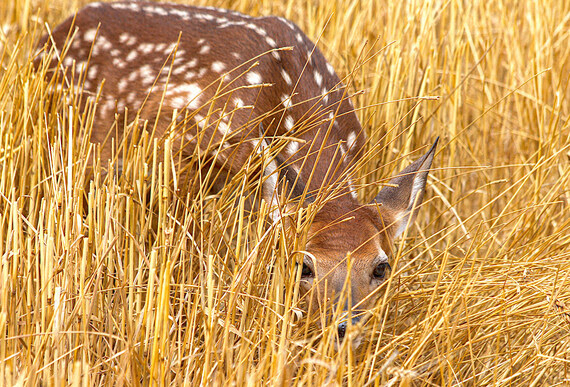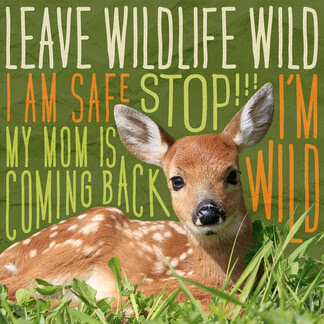
By Oklahoma Department of Wildlife Conservation
Best Policy Is to Keep Young Wildlife Wild, Biologists Say
Spring is a time of renewal in nature, continuing the ancient cycle that defines the outdoor world. But each spring, well-meaning people interrupt that ancient cycle because they want to “rescue” newborn and young animals that might appear, at first glance, to be abandoned.
With Memorial Day weekend upon us, many people are planning to enjoy time outdoors, and the chances of having encounters with wildlife are greater. So, theOklahoma Department of Wildlife Conservation is reminding everyone to keep young wildlife wild.
"If you find newborn wildlife while in the woods or in your yard that appears to be alone, chances are an adult animal is nearby and is simply waiting for you to move along so they can care for their young," said Mark Howery, Wildlife Diversity Senior Biologist with the Wildlife Department.
Late May and early June are the most likely times when people will come across a solitary fawn. The animal might appear helpless, but it’s actually part of the species’ survival strategy.
A fawn may be motionless and seem vulnerable, but this is normal behavior for a fawn, and the doe is probably feeding or bedding nearby. Even if you see a fawn alone for several days, you should still leave it alone. Fawns are safest when left alone because their colors and patterns help them remain undetected.
Does visit their fawns to nurse very infrequently, a behavior that helps fawns avoid detection by predators. If well-meaning people repeatedly visit a fawn, it can prolong separation from the doe and delay needed feeding.
Fawns will often be left in areas where people might easily find them, because those are places predators might be less likely to visit.
Game Warden Brayden Hicks, based in Blaine County, said Game Wardens often receive calls this time of year asking them to "rescue" fawns that have been found alone. “I tell them don’t touch the fawn, and don’t try to feed it. Normally the momma is around, and she’s left her fawn on purpose so she can go feed.”
The doe will also stay away from its fawn so the doe’s scent will not attract predators. "Sometimes the doe will stay away for many hours, but she will eventually come back and care for her fawn," Hicks said.
This advice applies to other species of wildlife, too.
 |
When people interfere and take in wild animals, they normally are doing more harm than good, Howery said. "Those animals may lose their instinctual fear of people and begin to bond with and depend on people to survive. If returned to nature later, these animals may not be able to feed or be aware of what dangers to avoid. And in some situations, the young animal could even die from the stress of being handled by people."
If a fawn has already been moved from where it was found, it is recommended to return it the capture site, even if many hours have passed. The notion that a mother will reject the young after being touched by people is largely a myth.
If a fawn is visibly injured or found with its dead mother (or in cases of clear injury or illness for any wildlife), reach out for advice by calling a licensed wildlife rehabilitator. Phone numbers are listed by county at www.wildlifedepartment.com/law/rehabilitator-list. People may also seek advice from a local Game Warden listed at www.wildlifedepartment.com/law/game-warden-directory.
When observing wildlife in their natural habitat, go ahead and take a good photo or two, but then leave them alone. The best policy is always to keep young wildlife wild.
For more information, go to https://www.wildlifedepartment.com/wildlife/leave-young-wildlife-alone.
